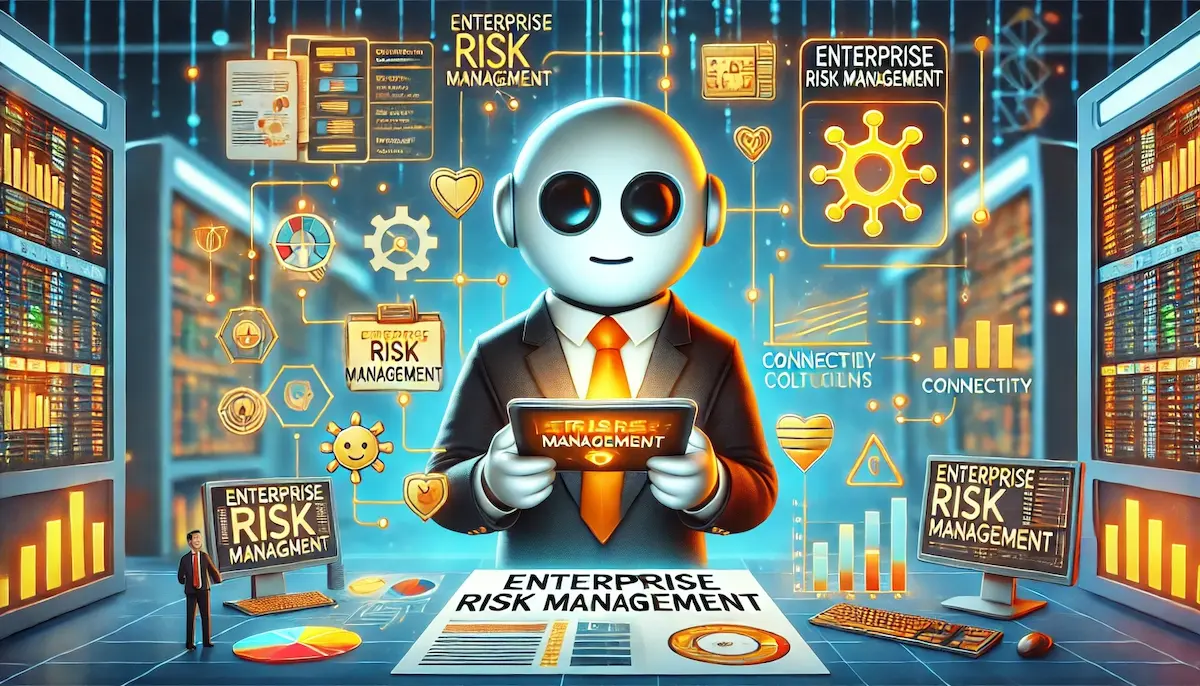Enterprise Risk Management (ERM) is a comprehensive framework used by organizations to identify, assess, manage, and monitor risks across the entire enterprise. ERM integrates risk management practices into all aspects of the business, ensuring that risks are considered in strategic planning, decision-making, and operations. This holistic approach helps organizations achieve their objectives while effectively managing potential threats. Let’s explore the key components and benefits of enterprise risk management.
The Role of Enterprise Risk Management
The primary goal of ERM is to create a risk-aware culture where risks are proactively identified and managed at every level of the organization. ERM encompasses all types of risks, including strategic, operational, financial, compliance, and reputational risks. By taking a unified approach to risk management, organizations can enhance their resilience and performance.
Key Components of Enterprise Risk Management
Several key components contribute to successful ERM:
1. Risk Identification
Identifying potential risks is the first step in the ERM process. This involves recognizing risks across various areas of the organization, such as operations, finance, strategy, and compliance. Techniques such as risk assessments, audits, and employee feedback can help in identifying these risks.
2. Risk Assessment
Once risks are identified, they must be assessed to determine their potential impact and likelihood. This involves evaluating the severity of each risk and its potential consequences on the organization’s objectives. Tools such as risk matrices, scenario analysis, and risk heat maps can be used for this purpose.
3. Risk Mitigation
Risk mitigation involves developing strategies to reduce or manage the identified risks. This can include implementing internal controls, diversifying investments, enhancing training programs, and developing contingency plans. Effective mitigation strategies help minimize the impact of potential disruptions.
4. Risk Monitoring
Continuous monitoring of risks is essential for ensuring that risk management strategies remain effective. This involves regularly reviewing risk exposures, assessing the effectiveness of mitigation measures, and making adjustments as needed. Real-time monitoring tools and key risk indicators (KRIs) can aid in this process.
5. Risk Reporting
Clear and timely reporting of risk information to stakeholders is crucial for informed decision-making. This includes providing regular updates on risk exposures, mitigation efforts, and any changes in the risk landscape. Transparent communication builds trust and supports strategic planning.
6. Risk Governance
Effective risk governance involves establishing a clear framework for risk management responsibilities and decision-making. This includes defining the roles and responsibilities of the board of directors, executive management, and risk management teams. Strong governance ensures accountability and oversight.
7. Integration with Strategic Planning
Integrating ERM with strategic planning ensures that risks are considered in the formulation and execution of business strategies. This alignment helps organizations balance risk and opportunity, making informed decisions that support long-term objectives.
Benefits of Enterprise Risk Management
Implementing effective ERM practices offers numerous advantages for organizations:
1. Enhanced Resilience
By identifying and mitigating risks across the enterprise, organizations can maintain business continuity and quickly recover from disruptions. This resilience helps ensure long-term sustainability and success.
2. Improved Decision-Making
Risk management provides valuable insights into potential threats and opportunities. This supports better decision-making by enabling leaders to evaluate the risk-reward balance of various strategies and actions.
3. Increased Efficiency
Streamlined risk management processes and enhanced controls reduce the likelihood of errors and inefficiencies. This leads to improved operational performance and productivity.
4. Cost Savings
Effective ERM minimizes the likelihood and impact of risk events, reducing potential financial losses. This helps protect the organization’s bottom line and ensures financial stability.
5. Enhanced Stakeholder Confidence
Strong risk management practices build confidence among investors, customers, and other stakeholders. Demonstrating a commitment to managing enterprise risks enhances the organization’s reputation and trustworthiness.
6. Better Compliance
Ensuring compliance with relevant regulations and standards reduces the risk of legal penalties and reputational damage. This fosters trust with regulators, customers, and partners.
7. Strategic Advantage
Organizations that effectively manage enterprise risks can gain a strategic advantage over competitors. By staying ahead of potential threats, businesses can seize opportunities and navigate challenges more effectively.
Conclusion
Enterprise Risk Management is essential for protecting an organization’s long-term objectives and overall strategy. By implementing robust ERM practices, businesses can enhance resilience, improve decision-making, and achieve sustainable growth. As the business environment continues to evolve, effective ERM will remain crucial for navigating uncertainties and seizing opportunities.
Blockfine thanks you for reading and hopes you found this article helpful.
